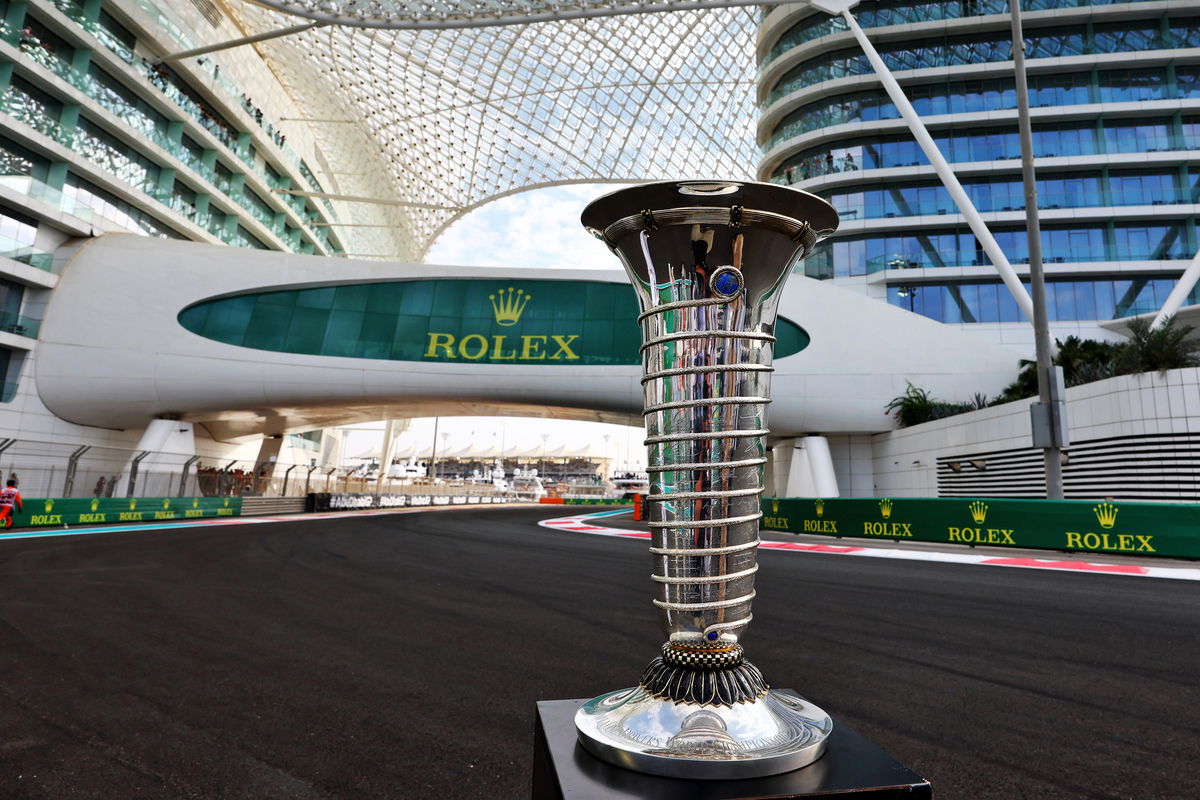

The system in use at any given time is important as it can change how a driver or team approaches a race in light of their championship ambitions.
For instance, for the first four decades of the world championship, only a drivers’ best results in a certain number of races would be counted.
There have been bonuses for fastest lap, and split points for sharing cars too.
Thankfully, much of that complexity has been consigned to the history books and Formula 1 now operates a simple and consistent point structure that works across both the drivers’ and constructors’ championships.
The current system rewards drivers who finish in the top 10 with a sliding scale structure with 25 points for a win, down to one point for finishing 1oth.
If a driver inside the top 10 also happens to set the fastest lap, they receive a bonus point, though if they’re not in the top 10 the point goes unawarded.
The fastest lap bonus will be scrapped from 2025.
A separate points structure also applies for Sprints, with the winner scoring eight points and a straight run down to one point for eighth place.
Every race and Sprint throughout the season counts, meaning in 2024 that is 24 races and six Sprints.
A constructors’ points tally is simply the combination of whatever both their drivers score.
At the end of the season, the driver and team with the most points is crowned the drivers’ and constructors’ world champion respectively.
Should there be a tie, the results are then looked at, with the number of first-place finishes being the first tie-breaker.
If that is also equal, if goes to number of seconds, thirds, fourths, and so on until a winner can be determined.
2006-2024 points structure
| Pos | Grand Prix Points | Sprint Points |
| 1 | 25 | 8 |
| 2 | 18 | 7 |
| 3 | 15 | 6 |
| 4 | 12 | 5 |
| 5 | 10 | 4 |
| 6 | 8 | 3 |
| 7 | 6 | 2 |
| 8 | 4 | 1 |
| 9 | 2 | |
| 10 | 1 | |
| Fastest Lap | 1 |
The structure does get complicated if only a partial race is completed, with a percentage of the above figures awarded based on specific thresholds.
If a race is less than two laps, no points are awarded. From two laps up until 25 percent of the scheduled distance, points are paid out at 6, 4, 3, 2, 1 for the top five.
That’s expanded to the top nine from 25 percent to 50 percent, while the top 10 and fastest lap get points from 50 percent to 75 percent.
However, it’s rare that partial points are awarded and is typically a result of weather or a significant incident that means a race cannot be resumed.
The current points structure came into force in 2006, replacing a system introduced in 2003.
During that period, there were no Sprints or bonus points awarded for fastest lap, and all races counted towards the world championship.
2003-2006 points structure
| Pos | Points |
| 1 | 10 |
| 2 | 8 |
| 3 | 6 |
| 4 | 5 |
| 5 | 3 |
| 6 | 2 |
| 7 | 2 |
| 8 | 1 |
Prior to that, a number of different systems were employed, with every race only counting towards the world championship from 1990.
1991-2002 points structure
| Pos | Points |
| 1 | 10 |
| 2 | 6 |
| 3 | 4 |
| 4 | 3 |
| 5 | 2 |
| 6 | 1 |
1961-1990 points structure
| Pos | Points |
| 1 | 9 |
| 2 | 6 |
| 3 | 4 |
| 4 | 3 |
| 5 | 2 |
| 6 | 1 |
Through this period, a number of different systems were employed, and that included different points for the constructor in 1961 (which received eight points for a win).
In 1961 and 1962, only the five best scores counted towards either championship, expanded to six from 1963-1965, before reverting to five again for 1966.
From there, it became somewhat more complicated, with the season split roughly in half.
In 1967, five of the first six races counted towards the world championships, and four of the last five.
A year later, that was five from both halves of the 12-event championship.
It continued along a similar vein until, in 1979, the constructors’ championship counted every race, while the drivers’ competition continued to split the season in half and taking the best results from each half.
While complicated, it was designed to cover off the inherent unreliability of F1 machinery at the time.
The final year of the system was 1990, when the best 11 races contributed to a drivers’ final tally.
1960 points structure
| Pos | Points |
| 1 | 8 |
| 2 | 6 |
| 3 | 4 |
| 4 | 3 |
| 5 | 2 |
| 6 | 1 |
1950-1959 points structure
| Pos | Points |
| 1 | 8 |
| 2 | 6 |
| 3 | 4 |
| 4 | 3 |
| 5 | 2 |
| Fastest Lap | 1 |
A curiosity of the 1950s was that, on occasion, points were shared as drivers were allowed to commandeer a team-mate’s car.
Rudimentary timing also created instances were the point for fastest lap was shared, with seven drivers receiving 0.143pt each at the 1954 British Grand Prix.




















Discussion about this post